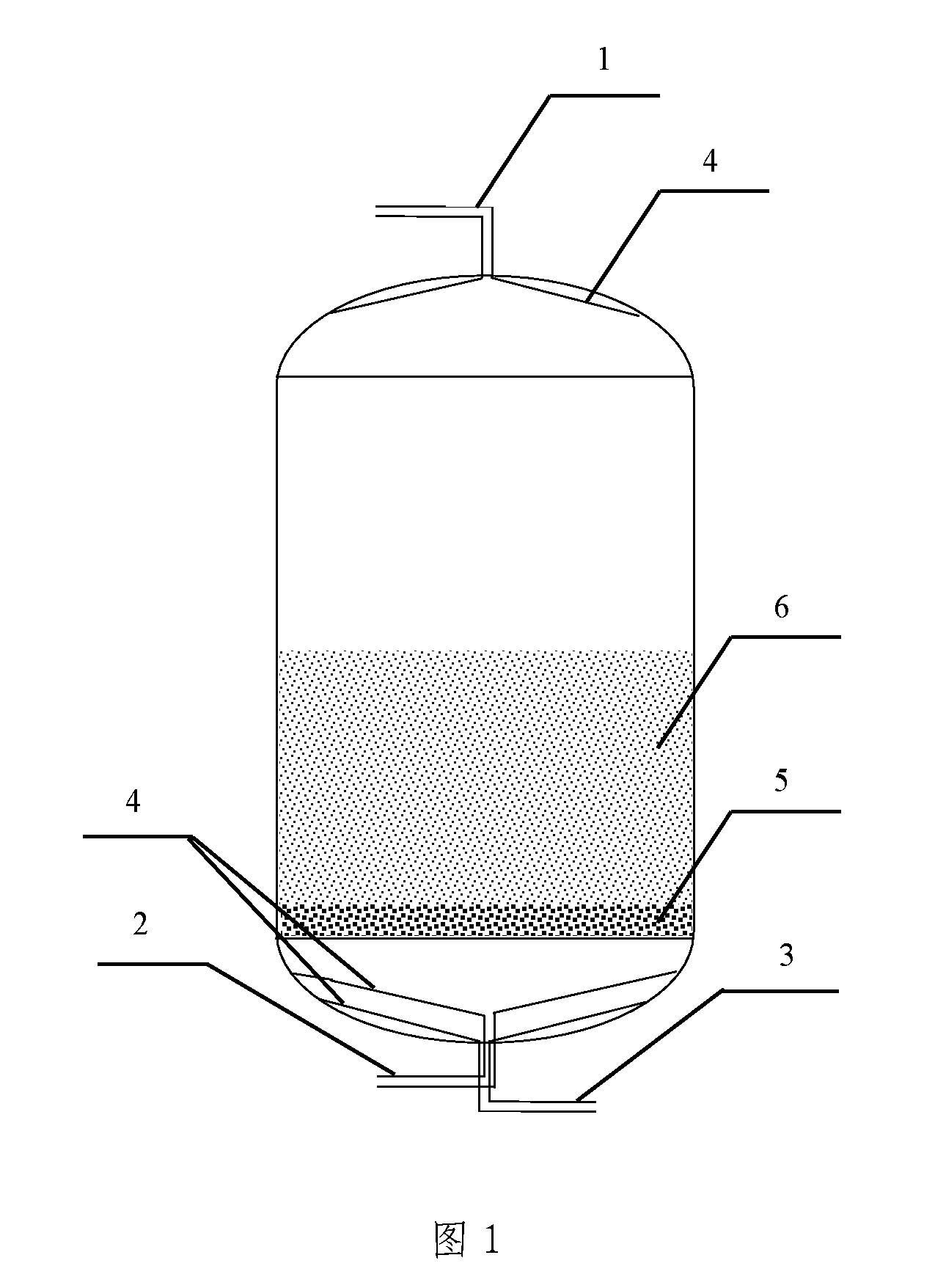Method for making ferric and manganese binary oxide based adsorbent
a technology of ferric and manganese binary oxide and adsorption solution, which is applied in the direction of metal/metal-oxide/metal-hydroxide catalyst, physical/chemical process catalyst, other chemical processes, etc., can solve the problems of not achieving satisfied removal of arsenic, water has serious effects on the health of human beings, and toxicity to human beings, etc., to achieve excellent oxidation and adsorption activity, good adsorption
- Summary
- Abstract
- Description
- Claims
- Application Information
AI Technical Summary
Benefits of technology
Problems solved by technology
Method used
Image
Examples
example 1
Preparation of the FMBO-Based Adsorbent
[0030]Diatomite was chosen as the carrier and was filled in the column-type water purifying reactor. The stock solutions of ferrous sulfate (15 g / L of FeSO4.7H2O) and potassium permanganate (4 g / L of KMnO4) were separately prepared. The pH of potassium permanganate solution was adjusted to in the range from 9 to 11 with sodium hydroxide solution. The solution of ferrous sulfate was continuously pumped into the water purifying reactor as shown in FIG. 1 until the layer of carrier was completely immersed; after immersing for 15 minutes, the solution of ferrous sulfate was discharged through the outlet 2. Then, the potassium permanganate solution into which the sodium hydroxide solution has been added was continuously pumped into the water purifying reactor until the complete immersion of the carrier; after immersing for 20 minutes, the residual solution was discharged from the reactor. The procedures stated above were repeated for 3 times at inte...
example 2
Preparation of the FMBO-Based Adsorbent
[0032]Diatomite was chosen as the carrier and was filled in the water purifying reactor. The mixed stock solution of ferrous sulfate (8 g / L of FeSO4.7H2O) and ferric chloride (10 g / L FeCl3.6H2O) and the stock solution of potassium permanganate (2 g / L of KMnO4) were separately prepared. The pH of potassium permanganate solution was adjusted to in the range from 9 to 11 with sodium hydroxide solution. The solution of ferrous sulfate and ferric chloride was continuously pumped into the water purifying reactor as shown in FIG. 1 until the layer of carrier was completely immersed; after immersing for 30 minutes, the solution was discharged through the outlet 2. Then, the potassium permanganate solution into which sodium hydroxide solution has been added was continuously pumped into the water purifying reactor until the complete immersion of the carrier; after immersing for 30 minutes, the residual solution was discharged from the reactor. The proced...
example 3
Preparation of the FMBO-Based Adsorbent
[0034]Diatomite was chosen as the carrier and was filled in the water purifying reactor. The mixed stock solution of ferrous sulfate (5 g / L of FeSO4.7H2O) and ferric chloride (10 g / L FeCl3.6H2O) and the stock solution of potassium permanganate (4 g / L of KMnO4) were separately prepared. The pH of potassium permanganate solution was adjusted to in the range from 9 to 11 with sodium hydroxide solution. The solution of ferrous sulfate and ferric chloride was continuously pumped into the water purifying reactor as shown in FIG. 1 until the layer of carrier was completely immersed; after immersing for 15 minutes, the solution was discharged through the outlet 2. Then, the permanganate solution into which sodium hydroxide solution has been added was continuously pumped into the water purifying reactor until the complete immersion of the carrier; after immersing for 20 minutes, the residual solution was discharged from the reactor. The procedures state...
PUM
| Property | Measurement | Unit |
|---|---|---|
| concentration | aaaaa | aaaaa |
| concentration | aaaaa | aaaaa |
| head loss | aaaaa | aaaaa |
Abstract
Description
Claims
Application Information
 Login to View More
Login to View More - R&D
- Intellectual Property
- Life Sciences
- Materials
- Tech Scout
- Unparalleled Data Quality
- Higher Quality Content
- 60% Fewer Hallucinations
Browse by: Latest US Patents, China's latest patents, Technical Efficacy Thesaurus, Application Domain, Technology Topic, Popular Technical Reports.
© 2025 PatSnap. All rights reserved.Legal|Privacy policy|Modern Slavery Act Transparency Statement|Sitemap|About US| Contact US: help@patsnap.com

